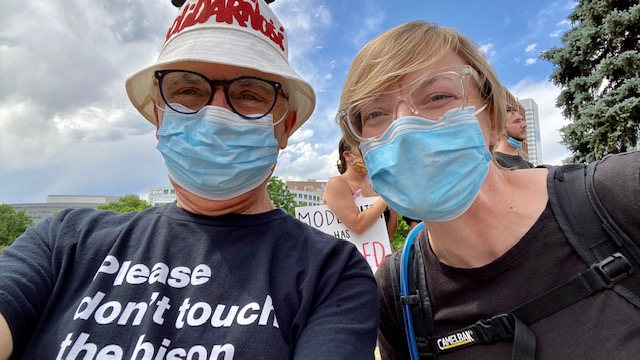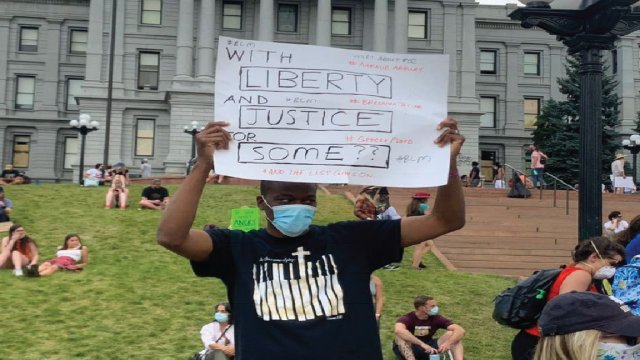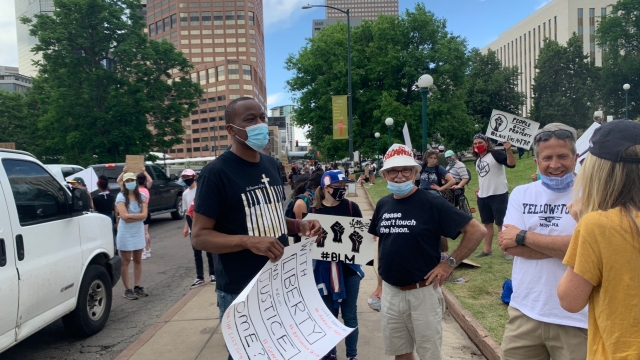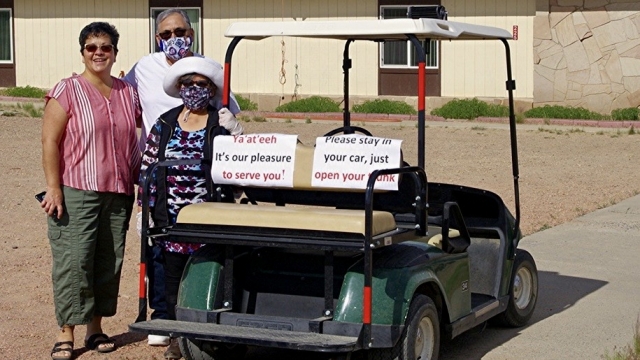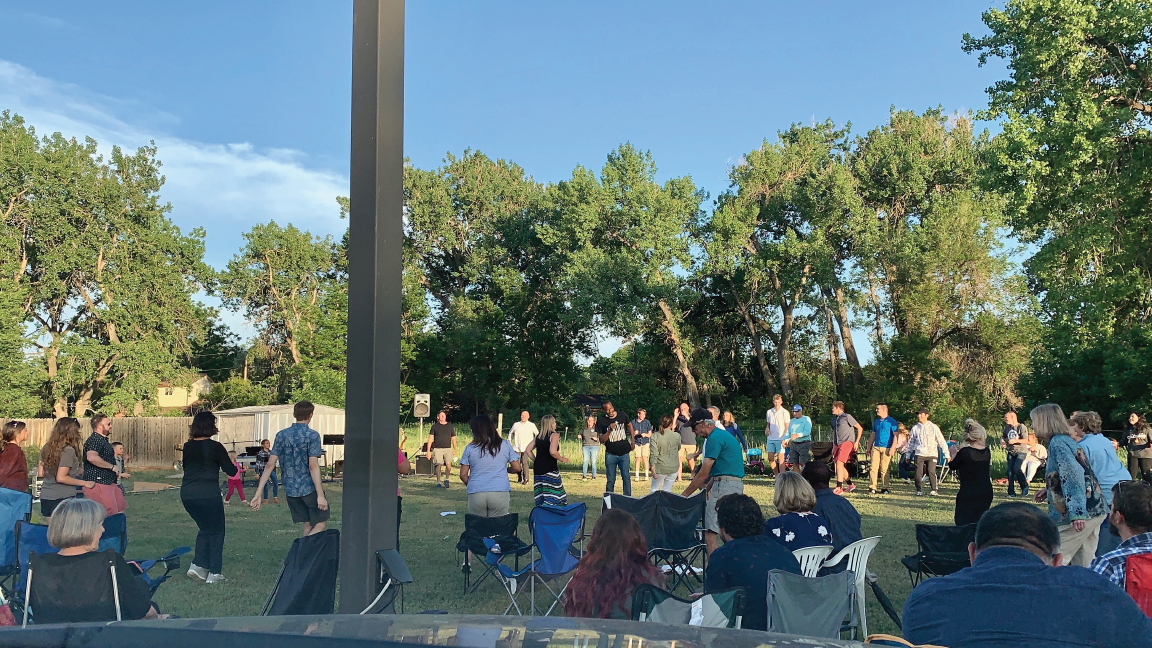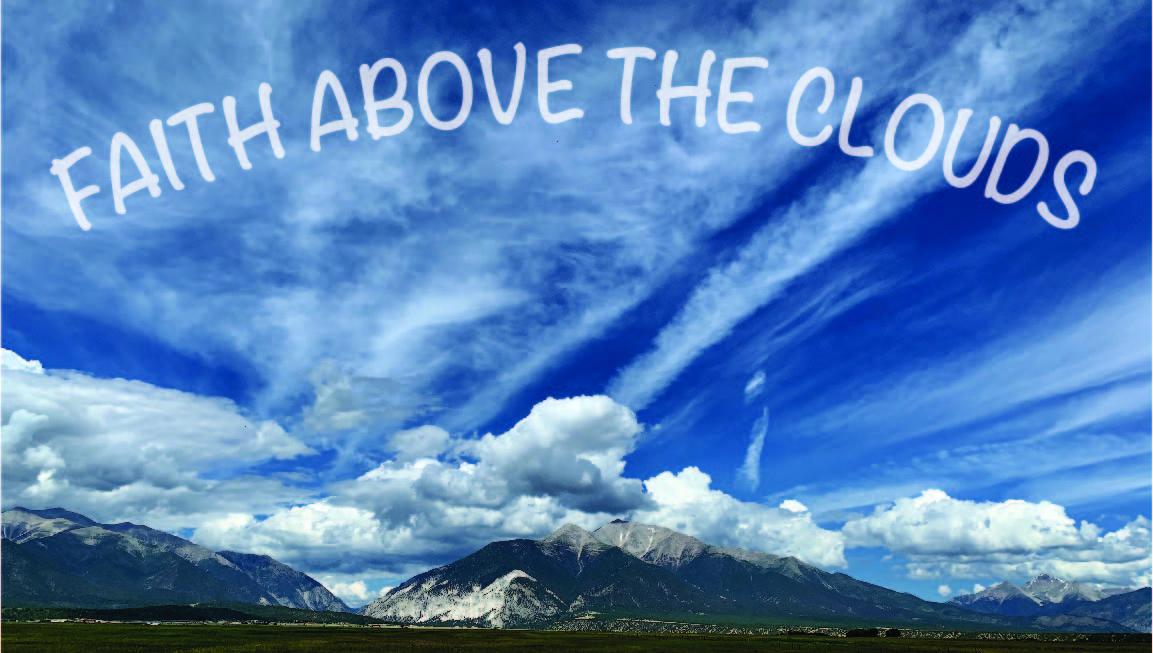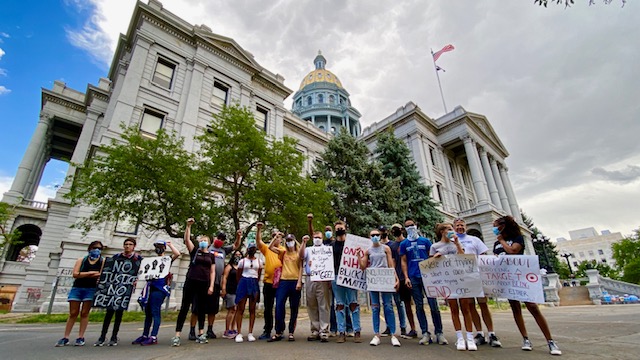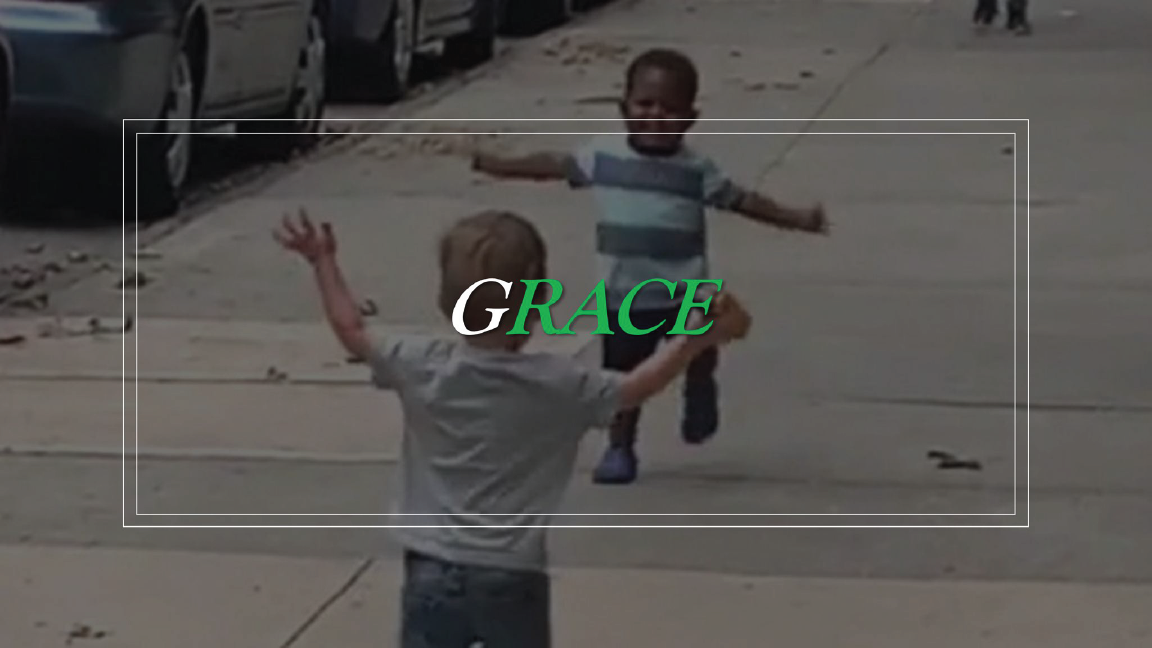By Jon Roberts – Denver, Colorado . . . “Everyone has a story” was the message heard among a group of 20 Seventh-day Adventist church members, leaders, and pastors who joined a city-wide protest at the State Capitol in Denver, Friday, June 5. They came from Aspen Park, Boulder, Castle Rock, Fort Lupton, LifeSource, Littleton, and Newday.
Some joined a racially diverse group which had gathered, while others joined to stand in solidarity with friends and individuals who has been disenfranchised and mistreated for years.
A member of the Boulder church, Becky De Oliveira came with her two young adult sons, Joshua and Jonah. She said, “I enjoyed attending the march for social justice with a group of Adventists from Greater Denver. Many of them I’d never met.”
“The protest was peaceful and filled with hope. I truly do hope for lasting change and healing for our country,” she added.
Joining marches and standing up for equal rights was part of the mission of the early Adventist church.
“We [Adventists] were on the cusp of the abolitionist movement, women’s suffrage, and we had involvement in a living wage before a minimum wage was in existence,” Nathaniel Gamble, pastor of Fort Lupton and Aspen Park churches commented. “It’s important to stand up for our brothers and sisters.”
Homemade signs included artwork or just words written with a sharpie pen, each with its own message: “With liberty and justice for some??” “All lives matter only when black lives matter.”
“Not about looting a target; not about being one either.” “We’re not trying to start a race war; we’re trying to end one.”
Nearly half of the Adventist group were young adults. For some, this was the second march they attended that week.
“I was proud to join voices with the RMC Youth who stepped up and spoke out as a force for good within our broken system.” Kiefer Dooley, youth leader from Rocky Mountain Conference commented.
“It’s been a tumultuous season in America. In the wake of the murders of Breonna Taylor and George Floyd at the hands of police officers, our country settled into a deeper level of unrest than that spurred by the worldwide COVID-19 pandemic. It became clear to us that the systemic racism that dwells in many of the structures and organizations in our country can go on no longer.”
Interactions between Adventist participants and community members were seen throughout the grounds of the capital. Others from the group stood on the sidewalk holding signs.
Horns honked in solidarity, while community members were handing water bottles and popsicles to the children in the crowd. Several local restaurants provided food, including vegan and gluten-free options, to make sure everyone in the community could enjoy themselves.
The gathering had a street fair feeling with something for everyone. If you wanted to protest, you could. If you wanted to stand silently as an onlooker, you could. If you wanted to listen to each other’s story, you could. It was obvious that the participants came for a reason: racial justice for all.
This was not like a protest you normally see on television; this was a chance to come together as one community to take a stand against an issue that has divided America for far too long.
“The difference I see here is that so many Caucasians are participating. Usually the marches are African-Americans stating ‘look how bad we’ve been treated,’” Robert Davis, member of Newday said. “This one is not about grievances; instead, the message is, ‘We are tired of the racial divisions. Every life doesn’t matter till black lives matter.’”
The message was loud and clear. Hope lives. Love wins in the end.
“While it was a moving experience to join our voices with others seeking reform and justice, it’s clear that our involvement cannot stop with a protest or a march. We must unite together in daily actions that bring justice to the downtrodden and freedom to the oppressed,” Jessyka Dooley, RMC assistant youth director, commented. “We are called to do justice, and to love kindness, and to walk humbly with our God. We are called to leave the 99 to bring rescue to the 1.”
“The march was such a clear demonstration of the tenacity of hope — we believe that wrongs can be set right, that change can come, and that humanity can grow in its understanding and interaction,” Jenniffer Ogden, pastor of the Boulder church said. “The march showed me once again that humans believe in hope and are looking for ways, they can actively participate in making change happen for the betterment of all.”
—Jon Roberts, is communication/media assistant for the Rocky Mountain Conference; photos Rajmund Dabrowski, Jenniffer Ogden, and Jon Roberts.

